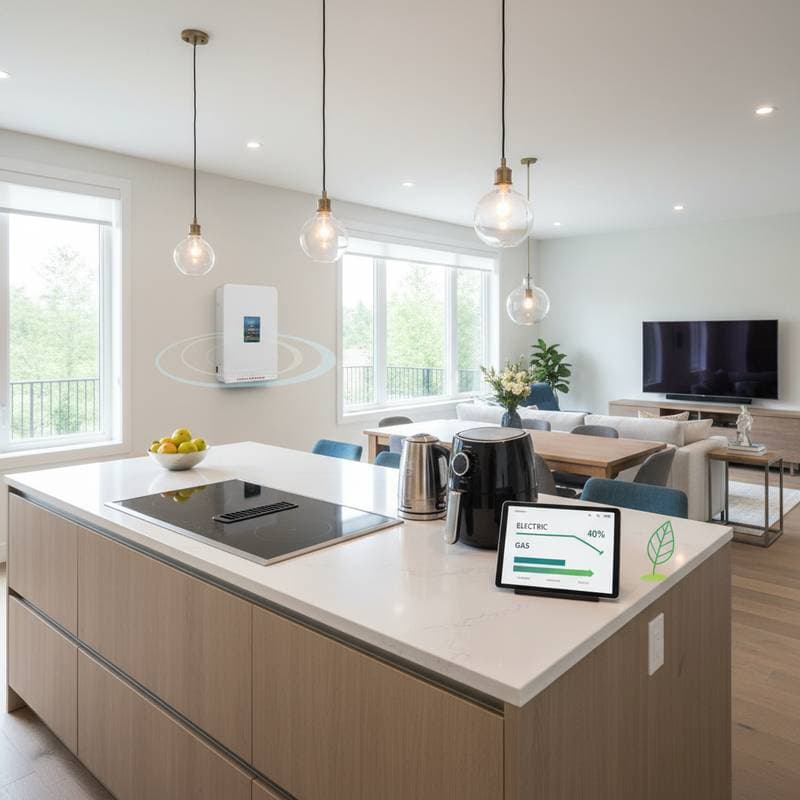Key Points
- Heat pump dryers reduce laundry energy costs by up to 70 percent compared to traditional vented models.
- These dryers recycle warm air rather than generating new heat continuously, which enhances efficiency and preserves clothing quality.
- Although initial costs exceed those of standard models, long-term savings, increased durability, and better indoor air quality justify the investment from financial and environmental standpoints.
- Pair heat pump dryers with efficient washing machines and adopt practices such as low-temperature settings and full-load cycles to maximize savings.
- Rebates, incentives, and energy certification labels frequently lower the effective cost of upgrading.
Why Heat Pump Dryers Benefit Your Finances and the Environment
Conventional dryers function by heating air and expelling it outdoors after a single pass through the clothes, resulting in substantial heat and energy loss with each cycle. Heat pump dryers employ a different approach: they circulate air in a closed loop, where a refrigerant extracts moisture from fabrics while recovering and reusing the heat.
This process consumes up to 70 percent less electricity, varying by model and household patterns. For instance, if a standard dryer incurs one dollar per load, a heat pump version may handle the same amount for approximately thirty cents. Over numerous weekly cycles, these reductions accumulate significantly.
Lower drying temperatures also minimize fabric stress, prolonging garment life and decreasing textile waste. Such outcomes support dual goals of energy conservation and waste reduction.
Cost Breakdown and Return on Investment
Consider typical cost structures to evaluate the economic value.
- Traditional vented electric dryer: Features a lower upfront price but elevated operational expenses, potentially totaling hundreds of dollars annually in electricity for average use.
- Condenser dryer: Offers modest efficiency improvements yet demands considerable energy for heat production.
- Heat pump dryer: Involves a premium purchase price offset by operating costs up to 70 percent lower.
For households with average electricity rates and about 300 annual loads, a heat pump dryer may eliminate roughly two-thirds of drying expenses yearly. Across ten years, savings could reach several thousand dollars, excluding rebates or incentives. Factoring in reduced clothing replacement and extended appliance longevity sharpens the investment case.
Sustainable Features and Performance Improvements
Efficiency in household appliances represents a quantifiable advantage beyond marketing claims. Heat pump dryers attain superior performance via a sealed air system that retains and recirculates heat, avoiding the need for ongoing generation.
Energy Labeling and Certifications
Select models bearing top-tier energy certifications, which reflect strong results from controlled evaluations. These designations provide dependable metrics for assessing options.
Low-Temperature Drying
Moderate heat levels safeguard sensitive materials, limit shrinkage, and conserve power. Drying at reduced temperatures further decreases microfiber release, benefiting indoor air and reducing pollution.
Advances in Refrigerant Technology
Current designs incorporate eco-friendly refrigerants with lower global warming potential than predecessors. These enhancements align with broader industry efforts toward sustainability.
Condensate Water Applications
Certain users capture the water byproduct for secondary purposes, such as plant irrigation or surface cleaning, after basic treatment. This practice extends resource efficiency.
Insights from Experts and Industry Data
Energy specialists and appliance professionals endorse heat pump systems for residential efficiency upgrades. Testing bodies confirm energy reductions of 40 to 70 percent relative to standard dryers in everyday scenarios.
Construction experts value the ventless configuration, which eases integration in diverse settings. In apartments or older structures lacking vent access, these units address installation challenges while complying with energy regulations.
Environmentally, substituting a conventional dryer with a heat pump model lowers a home's carbon output substantially over time. Integrating renewable energy sources amplifies these gains.
Practical Tips for Optimal Performance
Effective use of a heat pump dryer combines technology with routine practices.
- Extract excess moisture by spinning clothes fully in the washer before transferring to the dryer.
- Maintain filters and coils by cleaning them routinely to preserve airflow and efficiency.
- Activate sensor-based drying cycles, which halt automatically upon reaching optimal dryness.
- Load the drum appropriately to allow unrestricted air circulation and uniform results.
- Group items by material weight, as lighter fabrics require less time than heavier ones.
- Time operations for off-peak utility periods to leverage potential rate discounts.
Frequently Asked Questions
How do heat pump dryers differ from condenser dryers?
Both operate without external vents, yet condenser models dissipate heat into the surrounding space, whereas heat pump dryers reclaim it within the unit. This leads to substantially lower energy demands and reduced room warming.
Do they require specialized electrical or plumbing setups?
Standard electrical outlets suffice for most units, along with a minor drain line or reservoir for moisture collection. No venting or extensive modifications apply in typical installations.
Are drying times longer?
Cycles extend modestly due to gentler heat levels, but benefits in fabric preservation and energy economy outweigh this. Overnight operation or advance planning accommodates schedules effectively.
Can they manage substantial family laundry volumes?
Yes, contemporary models match the capacity of conventional units. Opt for larger drums and robust airflow in high-demand households for reliable performance.
Do they function well in cooler environments like basements?
Optimal operation occurs in temperate conditions, though efficiency holds in chillier spots with sufficient ventilation. Steer clear of unheated zones prone to freezing condensate.
Steps to Upgrade Your Laundry System
Transitioning to a heat pump dryer involves assessing current needs, researching certified models, and exploring local incentives. Professional installation ensures seamless integration, while tracking energy use post-purchase quantifies benefits. This shift not only trims expenses but also aligns daily routines with sustainable practices for lasting impact.










